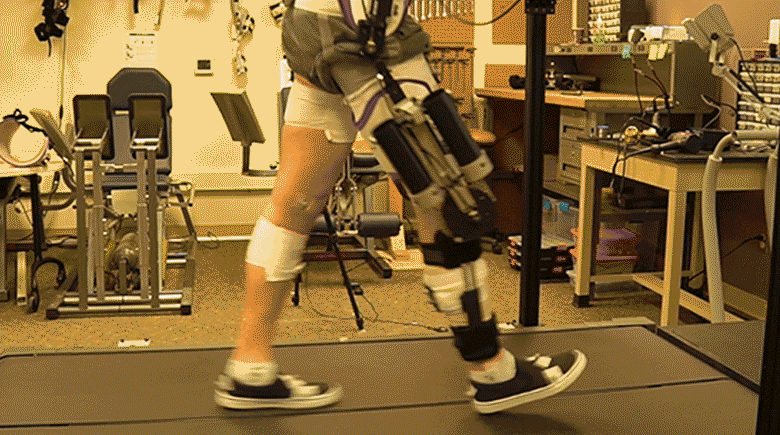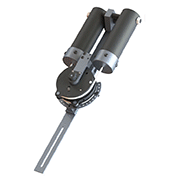
Gait impairments are a prominent source of disability after neurological or orthopedic injuries. Applying functional resistance training during walking is an emerging method for treating individuals with gait impairments. This training is administered by having a patient perform a task-specific training (in this case, walking) while a load is applied to resist the movement. This works simultaneously to improve muscle strength and coordination, which are often underlying sources of gait impairment. While there are several robotic solutions for this type of training, these devices are often too expensive for use in small clinics or in the home. Hence, we developed a unique, low-cost, passive exoskeleton to provide different types of elastic resistances (i.e., resisting flexion, extension, or bidirectionally) to the leg muscles during walking. This device uses a system of counteracting compressional springs, pulleys, and clutches to provide these different types of elastic resistance. This article covers in-depth the design of the mechanism and validation of the mechanism in a benchtop setting. The device is also tested on a human subject to display how it can alter joint moments, powers, and muscle activation during training. We also measured kinematic aftereffects once the resistance was removed. Our results indicated the device could specifically target knee flexors, extensors, or both, and increase eccentric loading at the joint. Additionally, these resistance types elicited different kinematic aftereffects that could be used to target user-specific spatiotemporal gait deficits. Hence, the device provides a potential low-cost option for addressing user-specific muscle weaknesses and gait deficits during functional resistance training.

